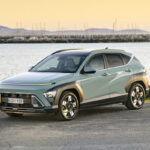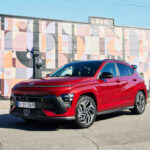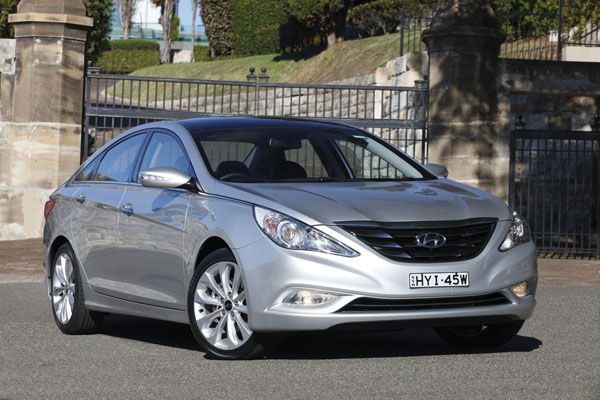
In a display, which can only be described as a case of automotive smoke and
mirrors, the new Hyundai Kona is designed to look like an electric vehicle – no
radiator grille – whether an EV, hybrid or petrol powered.
The maker Hyundai says this is to make the whole range of the small SUV, including
petrol variants – EV and hybrids are due here by year’s end – blend in with traffic
better in the future.
The ‘petrols’ on offer at present are a 2.0-litre four-cylinder with a CVT automatic and
front-wheel drive, and a turbocharged 1.6-litre four-cylinder with an eight-speed
torque converter automatic and all-wheel drive.
Prices for the second-generation SUV start at $32,000 and rise to $46,500, plus on-
road costs. The N-Line pack adds an extra $4000. Considerably more kit does come
with the price premium.
The new Kona is covered by a five-year $100,000 kilometre warranty and attracts
Hyundai’s Premium Roadside Support Plan free for the first 12 months and renewed
annually for up to ten years so long as the vehicle is serviced by Hyundai.
STYLING
If there were a patron saint of electric lighting, say St Osram, the new Kona would
pay him or her homage, for the car’s design makes Hyundai literally a leading light in
automotive design.
The absence of a grille apart, up front the full width of the compact sports utility
vehicle is emphasised by an LED strip light – similar to one which debuted in the
Staria – on the leading edge of the bonnet from wing to wing.
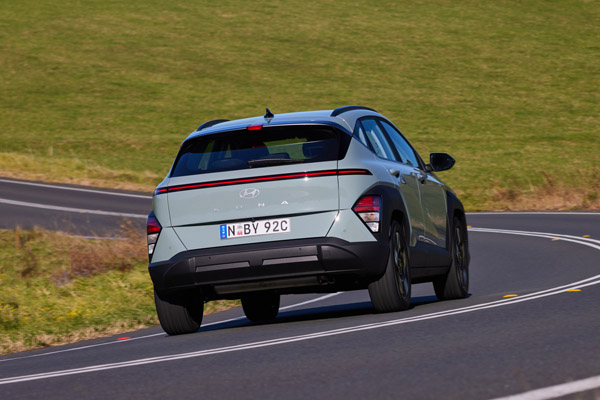
Not far behind is a similar single bar across the rear, highlighting the futuristic (EV)
view from behind. Outboard lighting matches the front triangular set-up. Inside and
out the new Kona is bigger than its predecessor. (see below). In profile, apart from
muscular wheel arch covers, the rest is very much de rigueur for the class.
INTERIOR
At a tad over 4.3 m long, 1.8 m wide and almost 1.6 m tall, the ‘small’ SUV is more
spacious on the inside too thanks to a 60 mm increase in wheelbase front to back. This
translates to much more leg room in the back compared with before. Head room is more
than adequate for the average adult.
Absent in the 2.0 is a shift-by-wire transmission stalk to the right behind the steering
wheel found in Premium and turbo grades. In its place here is a conventional centre-
console gearshift.
Storage abounds, with bins in the front doors big enough for large bottles and two
retractable cup holders in the centre console, plus a generous glove box, as well as
wireless charging, USB-C jacks and a 12V socket.
Rear doors can take small bottles and there are two cup holders in the fold-down centre
armrest and pockets on the front seat backs. Adjustable ventilation outlets and a pair of
USB-C power sockets are in situ. The boot will hold 407 litres with the rear seat backs
raised, or up to 1241 litres with them folded flat. A space-saver spare is carried.
INFOTAINMENT
A high-resolution 12.3-inch widescreen digital infotainment display sits above the
centre stack, which incorporates climate control air-con buttons. Directly in front of
the driver is a digital instrument screen inside a 12.3-inch panel.
Wireless Apple CarPlay and wired Android Auto are standard low down the model
range, while Premium variants with satellite navigation have only wired systems.
This is due to change later this year with wireless becoming available to all.
Hyundai’s Bluelink connection enables remote access from a paired smartphone with
vehicle location, remote lock and start services, plus the ability to contact emergency
services in the event of an accident.
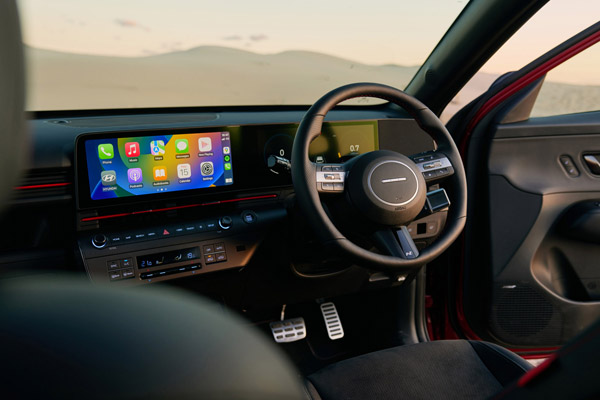
ENGINES / TRANSMISSIONS
The Kona and Kona Premium come with either a naturally aspirated Atkinson cycle 2.0-
litre four-cylinder petrol engine sending 110 kW and 180 Nm at 6200 rpm and 4500 rpm,
respectively, to the front wheels through a CVT automatic transmission.
Hyundai claims a combined urban / highway fuel consumption figure of 6.6 litres per 100
kilometres, while the test car came up with 6.1 litres per 100 kilometres over a week of
varied driving conditions.
SAFETY
Kona is on board with Hyundai’s SmartSense safety system, which includes front and
rear autonomous emergency braking (with car, ‘powered two-wheeler’, pedestrian and
cyclist detection), blind spot view and collision avoidance, lane-following and lane
keeping assist.
There’s also rear cross-traffic alert, active cruise control, safe exit warning, surround view
monitor, driver attention warning and tyre pressure monitoring. A multi-collision brake is
designed to minimise the chance of additional impacts after an initial crash and an
emergency stop signal function are also standard.
There are seven airbags, including a front centre bag to minimise front occupant injuries
in a side impact, as well as three top tether anchors and two Isofix positions across the
rear seat .
DRIVING
Riding on the standard 18-inch wheels the Kona kept up a steady march over some
rough country roads and reduced cabin noise intrusion to an acceptable level on
concrete motorway surfaces.
Steering followed suit with positive feedback from the road, while disc brakes,
ventilated at the front, had little trouble stopping the 1.4 tonne-plus vehicle in the dry-
only conditions encountered.
Speed presented only one problem and that was purely electronic. The test car
speed-sign recognition indicator suffered from a form of dyslexia: the 10 km/h speed
limit registered in a shopping centre car park remained unchanged through several
streets before the instrument display switched to the correct legal limit.
Other speed limits were slow to catch up and slip roads constantly over-rode the
legal motorway limit.
Constant speed limit and lane keeping audible warnings turned out to be
overzealous, and while made to be turned off, were not easy to silence.
SUMMARY
In typical Hyundai fashion the new Kona 2.0 stands apart in its class from a design
point of view and it will be interesting to see what the hybrid and full electric models
can come up with under the skin later this year.
RATINGS
Looks: 9/10
Performance: 7/10
Safety: 8/10
Thirst: 7/10
Practicality: 8/10
Comfort: 6/10
Tech: 8/10
Value: 8/10
AT A GLANCE
MODEL LINE-UP
Hyundai Kona 2.0 $32,000
Hyundai Kona 2.0 N-Line $36,000
Hyundai Kona 2.0 Premium $39,500
Hyundai Kona 2.0 Premium N-Line $42,500
Hyundai Kona 1.6 turbo N-Line $40,000
Hyundai Kona 1.6 turbo Premium N-Line $46,500
Options: Metallic paint $595 (all models); sunroof $1500 (Kona Premium) ; Light
grey, sage green interior $295 (Kona Premium}
Note: These prices do not include government or dealer delivery charges. Contact
your local Hyundai dealer for drive-away prices.
SPECIFICATIONS (Hyundai 2.0L 4-cylinder petrol, CVT, FWD)
ENGINE:
Capacity: 1.998 litres
Configuration: Four cylinders inline
Maximum Power: 110 kW @ 6200 rpm
Maximum Torque: 180 Nm @ 4500 rpm
Fuel Type: Regular unleaded petrol
Combined Fuel Cycle (ADR 81/02): 6.6 L/100km
DRIVELINE: CVT automatic, front-wheel drive
DIMENSIONS, WEIGHT AND CAPACITIES:
Length: 4350 mm
Wheelbase: 2660 mm
Width: 1825 mm
Height: 1590 mm
Turning Circle: 10.6metres
Kerb Mass: 1455 kg
Fuel Tank Capacity: 47 litres
BRAKES:
Front: Ventilated disc
Rear: Disc
STANDARD WARRANTY:
Five years / unlimited kilometres




